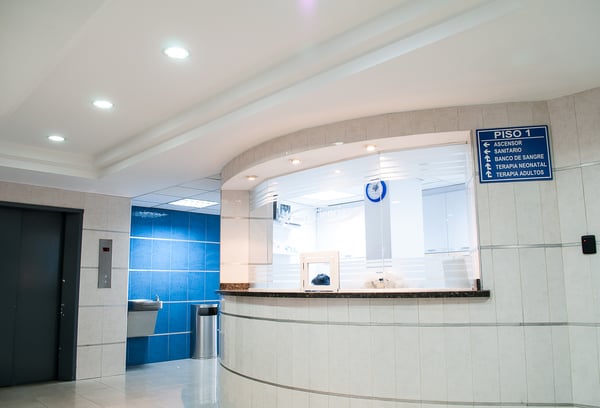Patient Outcomes in Colonoscopy: What's the Point?
Patient outcomes, whether positive or negative, affect not only patients and their families, but also physicians and staff providing care and the medical facility where a procedure / treatment takes place. Patient outcome measurements (e.g., safety of care, readmission, and patient experience) are often conveyed to the government, commercial payers, and organizations that report on quality. For instance, the Centers for Medicare & Medicaid Services (CMS) use outcome measures to calculate overall hospital quality.
![]()
Patient Outcomes in Colonoscopy: Physician Focus
Among gastroenterologists (GIs), two primary patient outcome measures are closely tracked. The first is cecal intubation rate, also known as colonoscopy completion rate. This measure reflects the percentage of patients in whom a physician successfully completes colonoscopy. A complete colonoscopy is one in which the physician is able to advance the scope to the end of the colon (known as the cecum), so that a full examination of the lining of the colon can take place. Current benchmarks for cecal intubation rate are set at 95% for screening procedures and 90% for all colonoscopies. When the physician is unable to reach the cecum, the colonoscopy is deemed an incomplete procedure, and the patient must either undergo another colonoscopy or an alternative (typically more costly, and less effective) procedure such as a barium enema.
The second patient outcome measure that GIs track closely is adenoma detection rate, often abbreviated as ADR. An adenoma is a precancerous tumor within the colon. Colonoscopy protects against colorectal cancer because it allows for the identification and removal of these precancerous tumors (adenomas) before they turn into cancer. ADR reflects the percentage of patients in whom a physician detects and removes at least one adenoma. The benchmark for ADRs is 25% overall, 30% in men, and 20% in women. However, large studies have shown that for every 1% increase in ADR, the risk of interval colorectal cancer (i.e., cancer that occurs despite having regular colonoscopies) is reduced by 3%. Accordingly, physicians are motivated to track and enhance their ADR because it directly affects the CRC risk reduction they provide their patients. It's worth nothing that ADR is also influenced by other quality measures, including cecal intubation rates and withdrawal times.
In addition, physicians want patients to have a risk- and pain-free procedure and that enhances their health and leaves them confident that they have had the best care possible.
Patient Outcomes in Colonoscopy: CMS / Medicare Focus
CMS identified two procedures that frequently occur in the hospital outpatient setting—colonoscopies and outpatient imaging—and created outcome measurements for each. The following are specific to colonoscopy:
- OP-29: Appropriate Follow-Up Interval for Normal Colonoscopy in Average Risk Patients
- OP-30: Colonoscopy Interval for Patients with a History of Adenomatous Polyps—Avoidance of Inappropriate Use
- OP-32: Facility 7-Day Risk-Standardized Hospital Visit Rate after Outpatient Colonoscopy
Establishing and measuring adherence to these standards are steps in the right direction, but patients who undergo colonoscopy expect more than just avoiding a trip to the ER. They want a thorough, efficient, pain-free exam. And if a problem is found, they trust it will be resolved. For instance, polyps that are discovered should be removed and biopsied. The patient expects to be (and should be) at the center of the procedure.

When Patient Outcomes Fall Short
In an ideal world, colonoscopy would be quick, comfortable, and effective, but that is not always the case, due to a variety of factors such as a torturous colons, poor bowel prep, body habitus, and adhesions from prior abdominal surgery. If looping occurs during the procedure, patients might experience pain, and the pain could be bad enough for them to return to the ER to rule out the possibility of a perforated bowel. Some patients have bruising from the application of abdominal pressure. And if procedures take longer that expected, the patient will require more anesthesia, which increases risks. Any of the these situations can lead to a negative experience.
Patient outcomes are also indicative of the medical efficacy of the procedure. Colonoscopy is a life-saving screening test that can detect, treat, and prevent CRC. When it is not carried out well for whatever reason, a pre-cancerous polyp might be missed and advance to CRC. Thus the best outcome is that polyps are found and removed, ultimately saving a patient's life; the alternative is the worst possible outcome, death from CRC.
What Patient Outcomes Mean for Physicians
Physicians want the best for their patients, and positive clinical outcomes are linked to a favorable patient experience. In one medical center, efforts to increase patient and family engagement resulted in a 62% decrease in medication errors, a 40% decline in falls, and 50% shorter hospital stays. According to the Agency for Healthcare Research and Quality (AHRQ), improving clinical indicators can positively impact a variety of health outcomes, including pain control, functional status, emotional health, physiological measures, and symptom resolution. Furthermore, good patient outcomes benefit a physician's reputation and practice; healthy, satisfied patients return for follow-up care and additional visits and recommend the practice to others. Other physicians send them referrals, and the best nurses and technicians want to work for them.
On the flip side, poor patient outcomes—whether it is pain after a procedure or an interval cancer advancing from a missed polyp—can affect a physician’s livelihood.
What Patient Outcomes Mean for Healthcare Facilities
The lifetime value of a patient is approximately $1.4 million. When patients have a bad experience and choose to go elsewhere for care, that money follows them, along with anyone with whom they have shared their opinion, including those in their online community. Today, patients can easily compare the scores and ratings of healthcare facilities and often make choices based on online reviews. NRC Health found that over 32% of people who visit a hospital website say reviews are the most important thing on the site.
Unfortunately, bad news travels fast; facilities that reflect negative patient experiences are four times more likely to have substandard reputations than facilities with positive ones. Imagine the impact on a hospital's bottom line of one missed pre-cancerous polyp or one perforation.
![]()
Ultimately, patient outcomes matter because they are the key measures of health and well being, and they have a significant financial impact on physicians and staff and the facilities where they practice.


